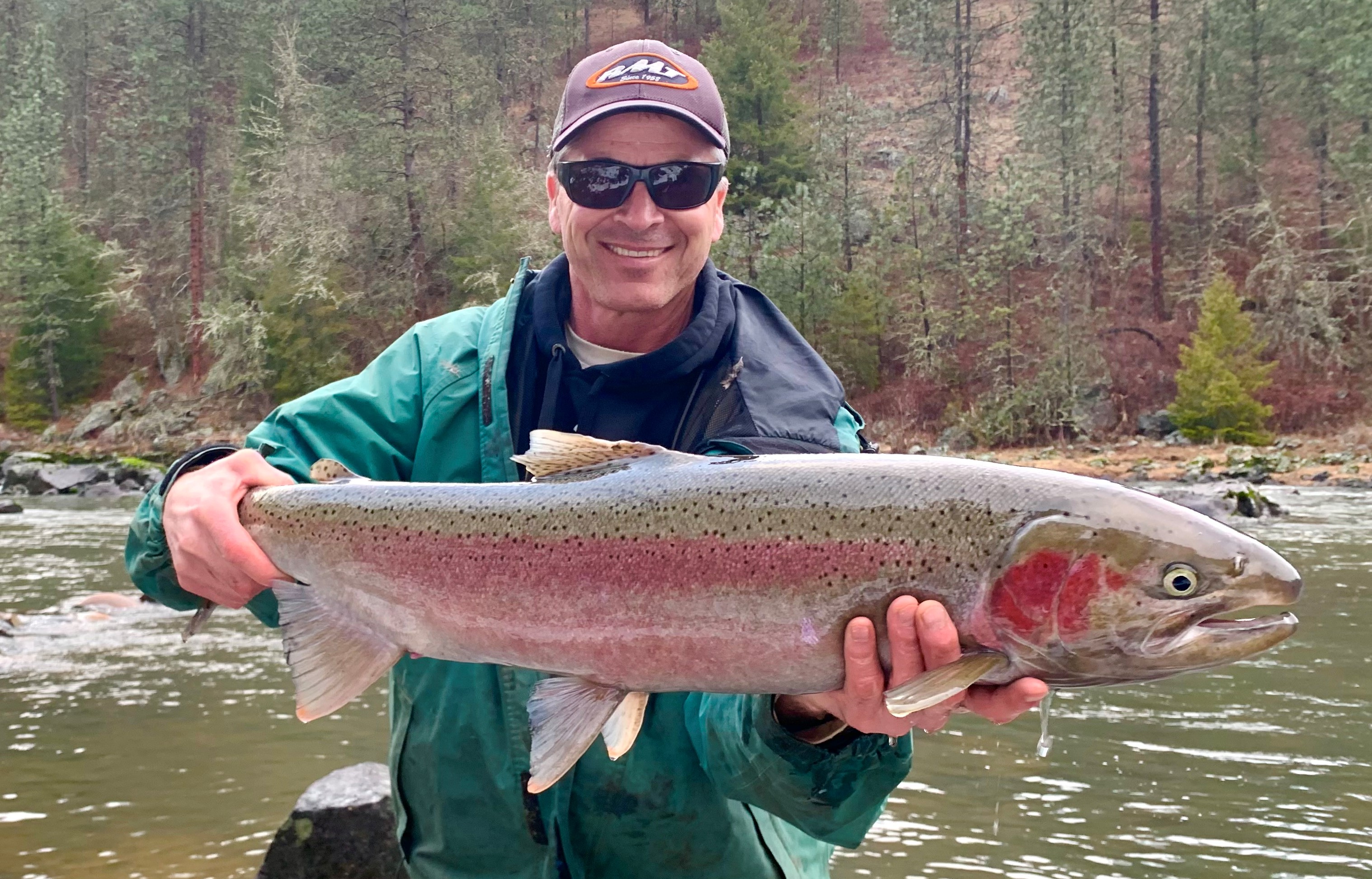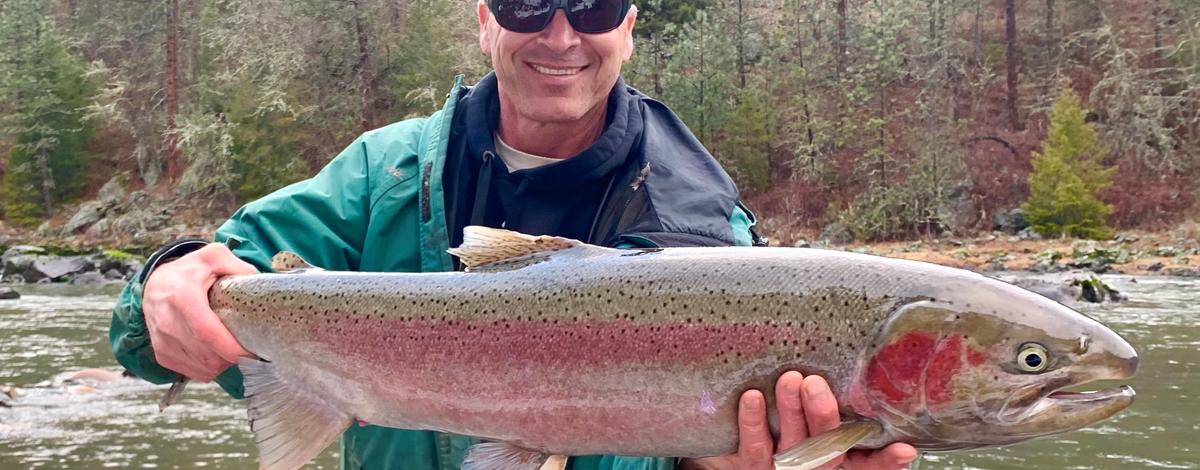Changes to the Steelhead Seasons Starting in 2022
Hi everybody. Our Fish and Game Commission met on November 16 to set seasons and limits for Idaho’s fisheries for the next three years (2022-2024). The commission approved a variety of changes to fisheries across the state including changes to some of our steelhead seasons. In addition, because this season’s steelhead return is down, they also modified the 2022 spring season (starting on January 1) to ensure we make broodstock needs. In this blog I will share with you the changes the commission made to the steelhead seasons and why they made them. This blog is fairly long, so if you are only interested in certain aspects of Idaho's steelhead fisheries, scroll down through the headers and read what is of interest to you. The changes the commission made for the next three years are listed first, and towards the end I discuss what additional changes are in store for just the spring season of 2022.
Clearwater River Basin (2022-2024)
As many of you may recall, we have been talking about potential changes to the steelhead seasons and limits in the Clearwater River basin for some time now. Because we knew changes to this fishery would be controversial, we took a different approach and utilized a working group, represented by people who would be influenced by changes to this fishery, to help guide the process. This working group developed two steelhead proposals that were presented to the public asking which one they preferred most. I suspect many of you are familiar with these two proposals as I know most of you had an opportunity to comment on them.
As a refresher, the two proposals people voted on were as follows:
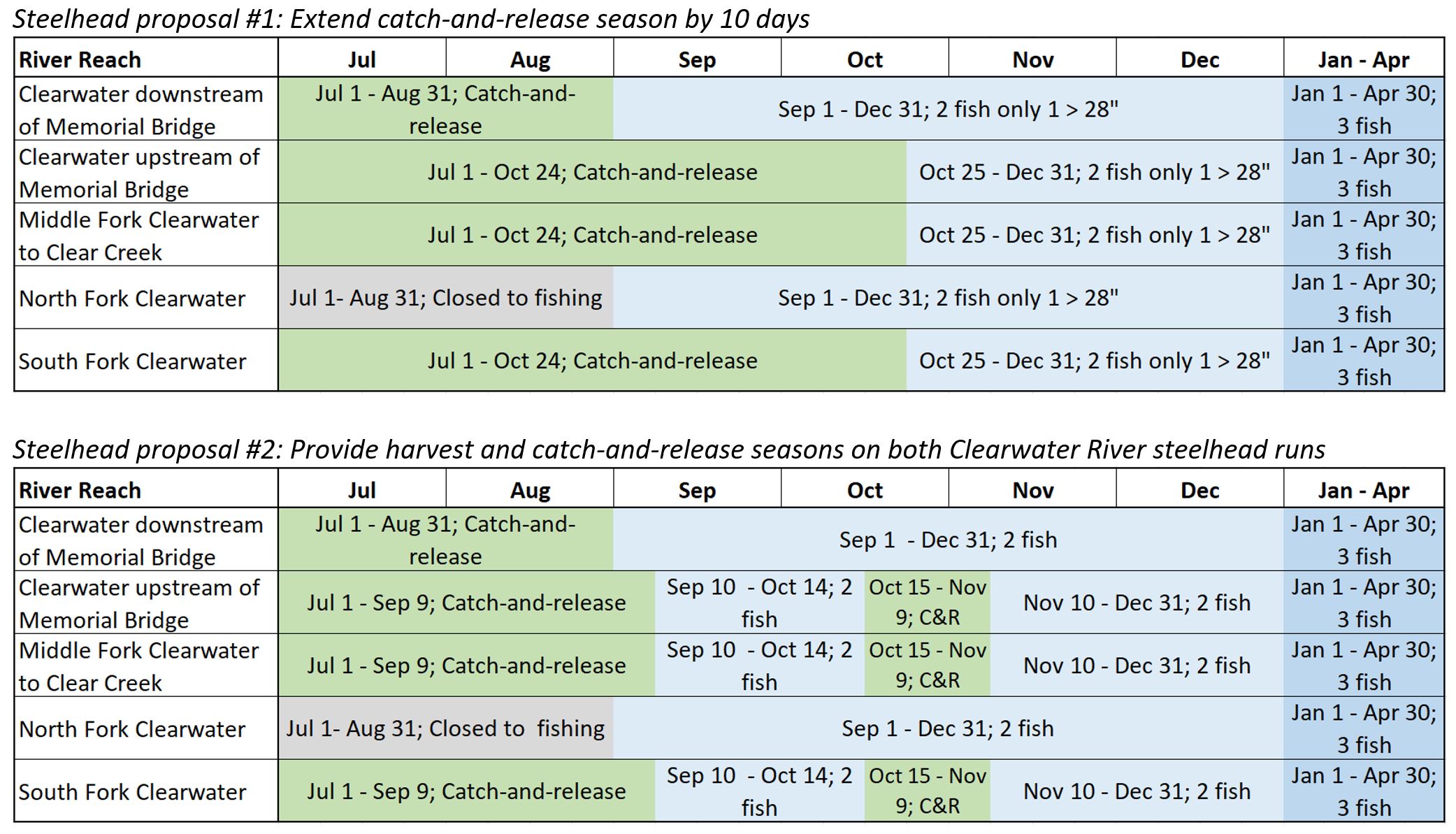
People were given an opportunity to comment on these proposals in a variety of way.
- Anglers who bought a salmon or steelhead permit during the last five years and provided their email address received an email invitation to an online survey. This was sent to about 35,000 people.
- The same survey was also set up on the IDFG website and was open to anybody who wanted to participate.
- Three public meetings were held (two in Lewiston and one in Orofino).
We received 2,264 responses about the two steelhead proposals. About 85% of the people who responded were Idaho residents. Additionally, 89% of the responses we received came from the e-mail invitation survey, 10% came from the open website survey, and 1% came from public meetings.
The figure below shows how people responded to this survey. I did not include the results from the public meetings in this figure because they represented just a small percent of the responses and because the vast majority of people who attended the public meetings had already commented through the E-mail Survey or Open Website Survey. When we combined all the responses from these two surveys, more people (9% more) preferred Proposal Package 2 over Proposal Package 1 (see Figure below).

We also looked at whether the responses changed based on if the respondents were Idaho residents or not and how frequently they fished the Clearwater River. Interestingly, regardless of how we broke the data out, more people preferred Proposal 2. For this reason, the IDFG staff recommended to the commission to adopt steelhead seasons and limits in Proposal 2 for the next three years (2022-2024). The commission agreed with this recommended and adopted proposal 2.
We recognize that there was not a strong preference for Proposal 2 over Proposal 1 which means there will be a lot of people who are unhappy with this decision. However, we had to make a decision, and in this case we let the majority rule. I can tell you that I read every comment that people wrote and I appreciate the passion that people have for this fishery. There were many strong arguments for why we should have selected one proposal over the other. Because we are implementing Proposal 2, I do want to share with you some of the reasons people expressed to us for why they preferred Proposal 2.
- Some people were very excited about harvesting steelhead early (from Sep 10- Oct 14) in the Clearwater River when their flesh quality is at its highest.
- Some people liked that this early steelhead harvest season would also occur at the same time as the Coho Salmon and fall Chinook Salmon seasons would be open providing a great opportunity to put meat in the freezer.
- Some people were very excited to have a catch-and-release season later in the year (Oct 15 – Nov 9) when the larger Clearwater hatchery steelhead would be migrating in. This later catch-and-release season will occur when flows will be lower making it easier for shore anglers to wade and test out their skills. It will be interesting to see how good catch rates will get for these fish as they build up in numbers during this 26 day catch-and-release season.
- Some people claimed Proposal 2 provides something for everybody. If you don’t like a particular part of this season, just wait a few weeks and you’ll get what you are looking for.
Snake River (2022-2024)
For the Snake River, the changes to the steelhead seasons that were adopted were very minor. The only change was to extend the catch-and-release season so it starts on July 1 instead of August 1. There were no changes made to when the harvest season would occur, what the limits would be, or where you could fish. The main reason the commission elected to start the catch-and-release season on July 1 was to match the season with the lower Clearwater River and help avoid confusion where these two water bodies joined. The public expressed strong support (87% in favor) for this change. In addition, the Washington Department of Fish and Wildlife has verbally indicated that if Idaho implemented this change, they would also attempt to adopt the same season for the Snake River. If that occurs, that would make the steelhead season in the Snake/Clearwater confluence area the same, greatly reducing confusion.
Steelhead Seasons For Idaho For The Next Three Years (2022-2024)
No changes were made to the steelhead seasons and limits in the Salmon or Little Salmon rivers. As such, when you consider the changes I discussed above, Idaho’s steelhead seasons for the next three years will follow what is show in the figure below. This is the exact figure that will be printed on page 44 in the new 2022-2024 Idaho Fishing Seasons and Rules brochure. As a note of caution, during down steelhead returns we may deviate from the seasons and limits displayed below. We will do our best to keep all of you up-to-speed on any changes that are made. If in doubt, you can always refer to our IDFG website (https://idfg.idaho.gov/fish/steelhead/rules) or contact one of the regional offices.
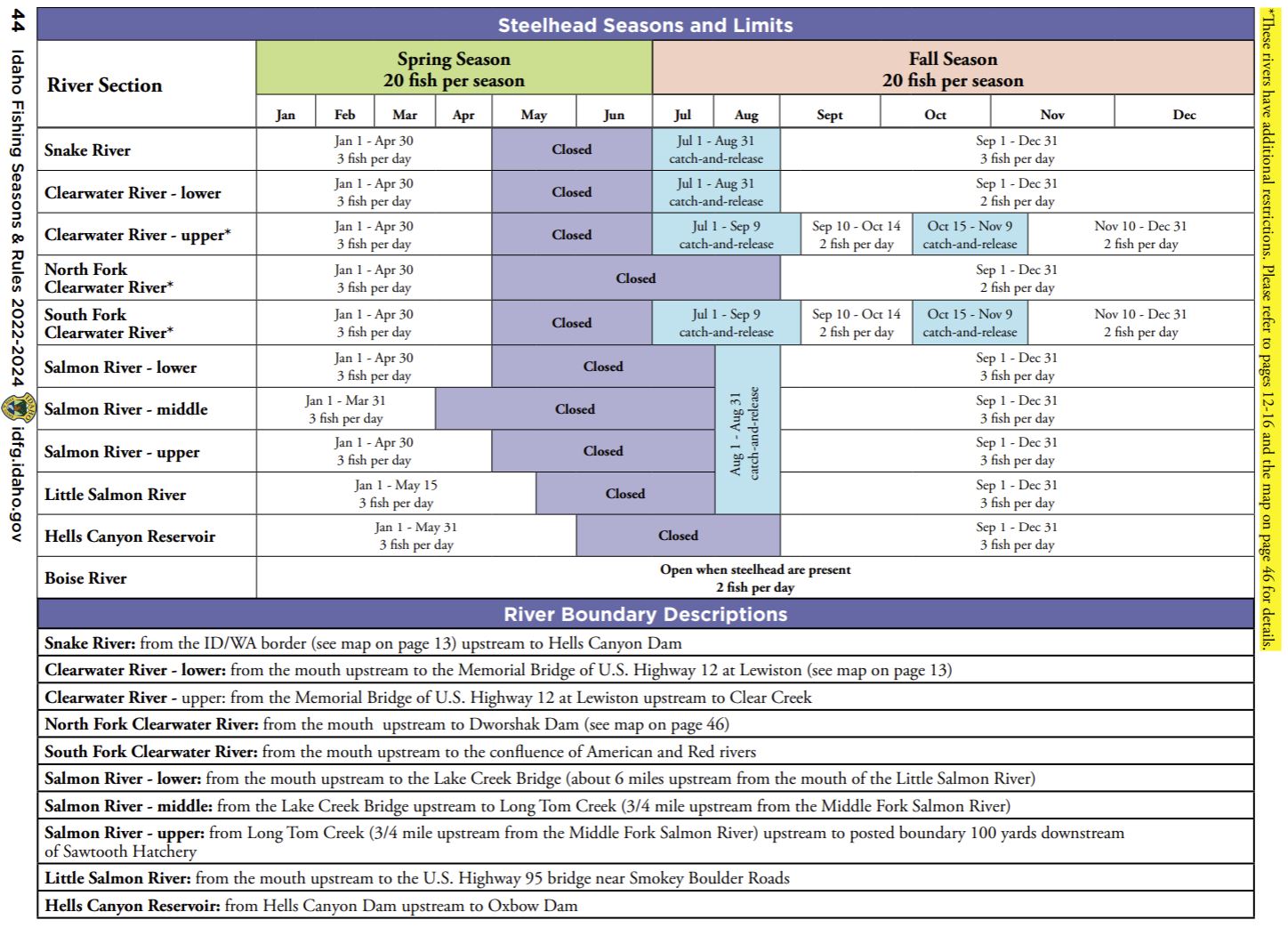
Changes To Steelhead Seasons For The Spring Season Of 2022 (Staring January 1, 2022)
Right after the commission adopted the steelhead seasons for the next three years presented in the table above, IDFG staff reminded them that this year’s return was down. To ensure we met our broodstock needs and stayed within our harvest share, IDFG staff recommended to reduce the limits and the commission adopted these recommendations. Specifically, this action reduced the daily limit in the Snake, Salmon and Little Salmon rivers to 2 fish, and for the steelhead fishery in the Clearwater River basin, the daily limit was reduce to one fish. These changes are shown in red in the table below. Remember these changes start on January 1 and only apply to the to the 2022 spring season.
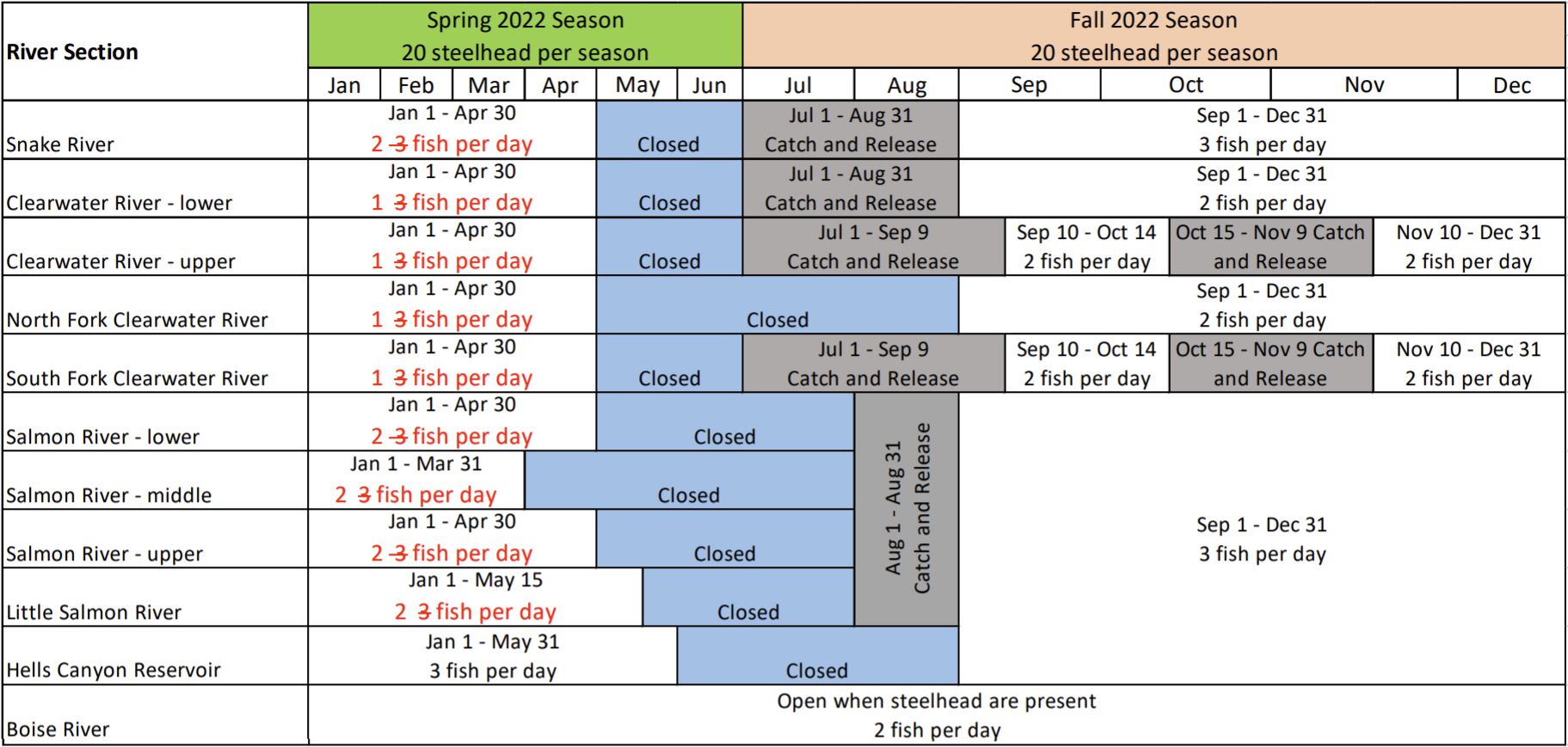
To give you a feel for why we recommended these changes I would like to share the following data with you.
Clearwater River Basin
The figure below shows what the returns for adipose clipped Clearwater hatchery steelhead have been like since 2010 based on PIT tags detected at Lower Granite Dam. The information shown for 2021-22 is our best estimate for what this return will ultimately end up at. There are some important things to point out in this graph. First, since 2010, this will be the third worst return for this fishery. When we saw similar or worse returns in the past, we implemented more restrictive limits in the fall (they are shown in white text above the years they occurred in) to ensure we met our broodstock goals. For all of those years we implemented more restrictive steelhead limits in the fall, we were able to meet our broodstock goals. In fact, these regulations were so effective that we actually were able to provide more harvest opportunity in the spring. So we decided to take a little different approach this year. Instead of starting with a daily limit of one fish, none greater than 28 inches, we decided to start with a 1-fish daily limit with no size restrictions. This is what currently is in place for the fall season, and with the commission’s adopted changes, this will continue for the spring. I will caution you that with the more aggressive approach, it may require us to get more restrictive in the future. Currently it looks like the steelhead harvest share for the Clearwater River basin will be around 2,150 fish greater than 28 inches in length. Through the month of October, we estimated that we harvested over 400 fish of this size. Catch rates have dropped since then, but with some simple math it tells you that we will be cutting it close by the end of the season. We will keep you posted if additional changes are required.
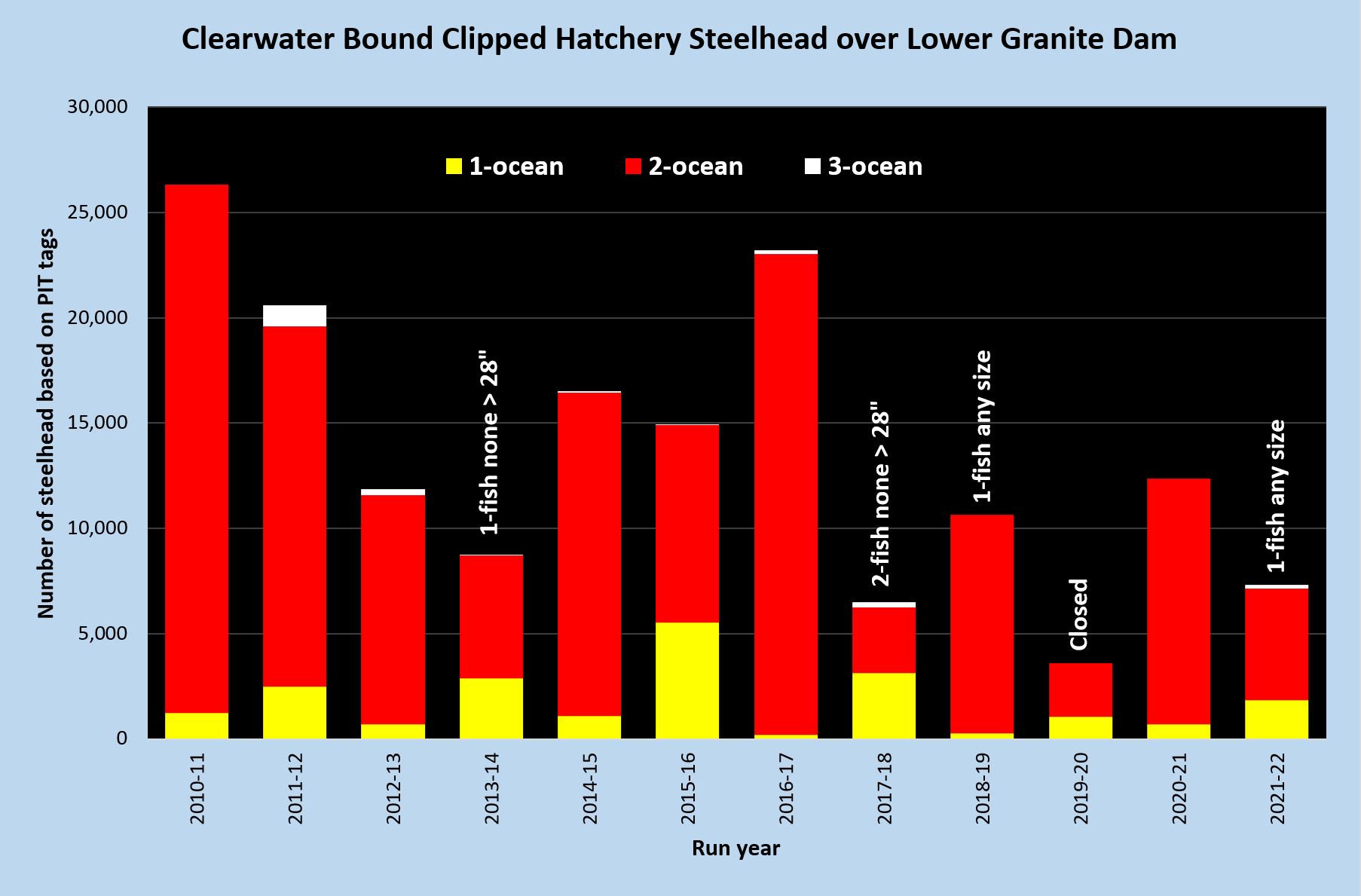
If you pay attention to the number of 1-ocean steelhead that are returning to the Clearwater River basin this year, you will notice there are more returning than then we saw the previous three years. That is a good indication that returns will improve next year.
Snake, Salmon, and Little Salmon Rivers
On September 3, 2021 the daily limits for steelhead in the Snake, Salmon, and Little Salmon rivers were reduce to one fish to ensure we met our broodstock needs. At that time, we estimated about 9,000 hatchery steelhead would pass over Bonneville dam that would be returning to trapping locations in those watersheds. Based on past experience, we knew that without reducing the limits we may not make our broodstock goals. Now that the return of this steelhead run over Bonneville Dam is complete, we learned that this run was actually late and more are coming back than we originally anticipated. We now know close to 13,500 of the fish destined for these trapping locations have passed over Bonneville Dam (see Figure below). This give us confidence that we can increase the daily limit to 2 fish and still meet our broodstock goals. In fact, it looks like this year’s return will be very similar to last year’s return when we provided a daily limit of two fish and were able to meet broodstock goals.
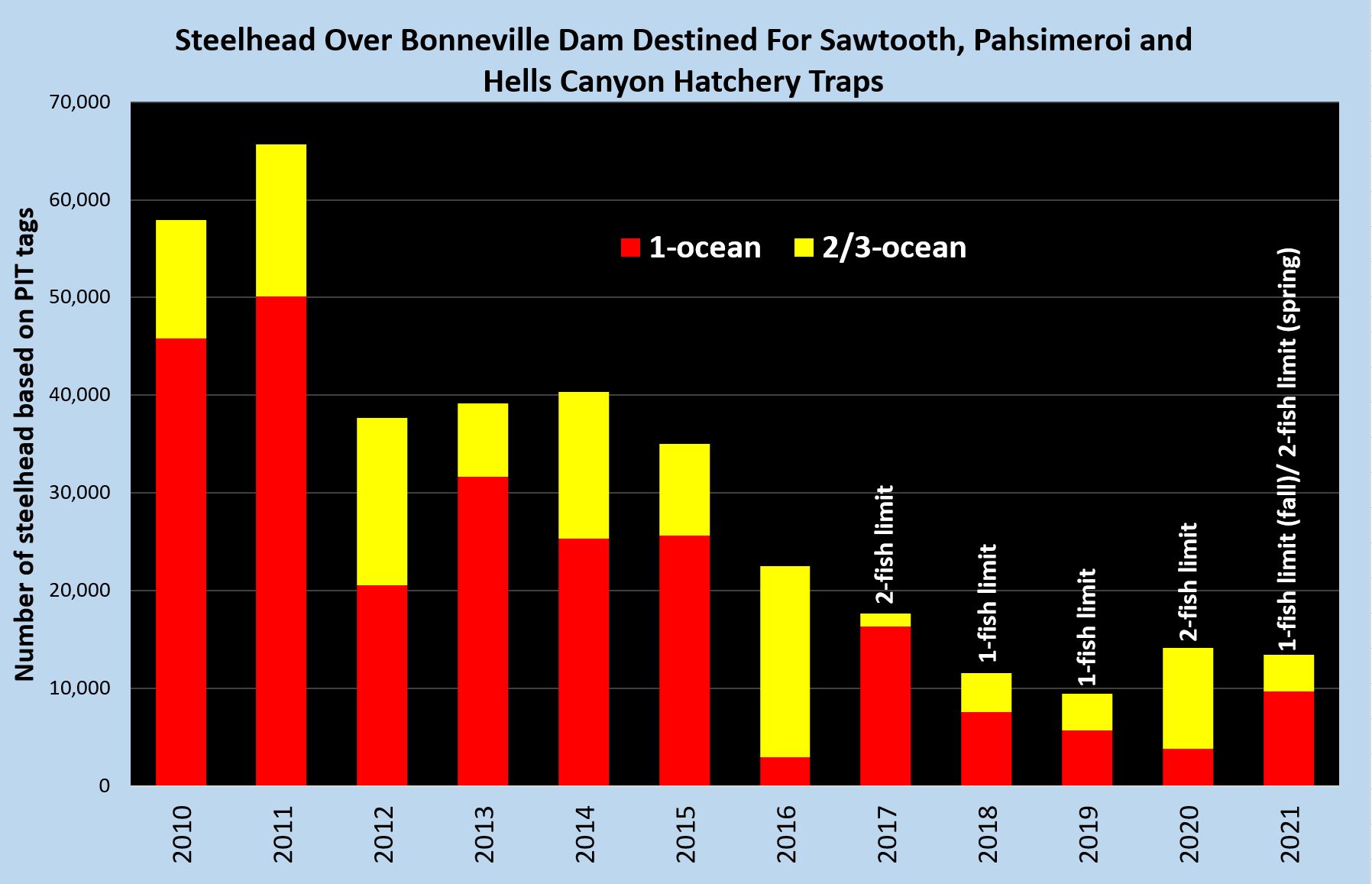
Wild Steelhead
Another thing we pay close attention to is the status of our wild steelhead returns. If you look at the graph below, you will see we are projecting that around 10,600 wild steelhead will pass over Lower Granite Dam during the 2021-2022 run (spawn year 2022). This certainly is a low return; however, it is above the Critical Abundance Threshold (> 6,300 fish past Ice Harbor Dam – first Snake River dam) where NOAA Fisheries has indicated that if the wild run drops below this number, addition conservation measures are required to minimize risk to wild steelhead. As you all know, our sport fisheries do not allow harvest of wild steelhead, thus impacts from Idaho fisheries will occur only through catch-and-release practices. Modeling exercises we have conducted indicate that the low mortality Idaho’s wild steelhead face through our fisheries will not reduce their long-term probability of persistence.
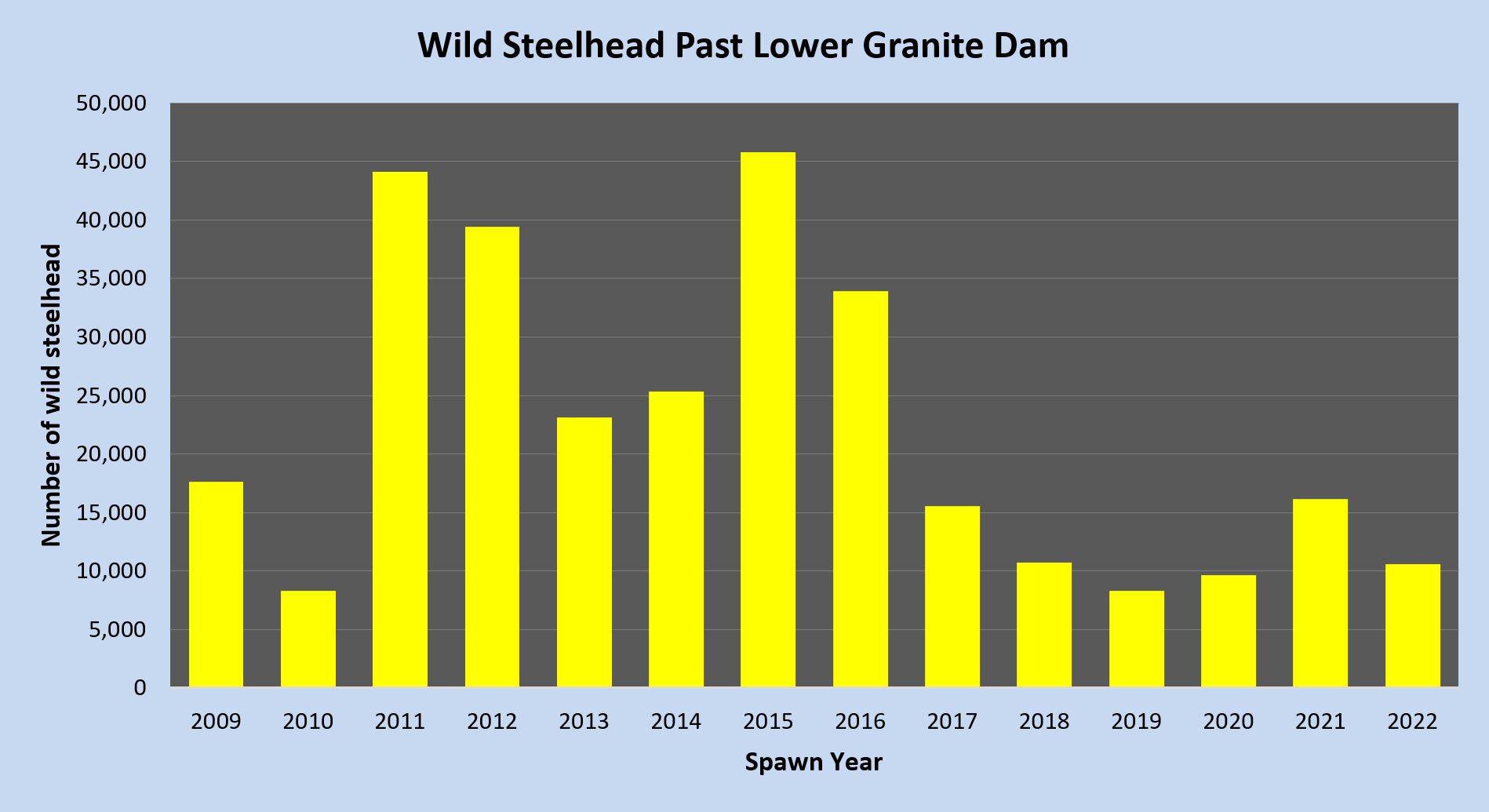
That is all I have for you today. I hope you all have a good Thanksgiving week.
